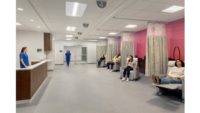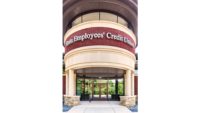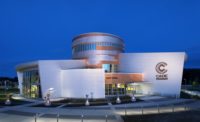Hosting one of the top 10 best plant science programs in the country, the North Carolina State University Plant Science Building is an exciting, new, 185,000-square-foot, cutting-edge facility in Raleigh, North Carolina.
Earning recognition with a 2023 Metal Construction Association Design Award in the metal composite category, the application of metal building systems in the research facility extends way beyond the high-performing metal cladding. Metal sunshades, metal ceilings, exposed structural steel and metal greenhouse framing also boost performance, energy efficiencies and aesthetics for the LEED Gold building.
For the interdisciplinary science hub where students, researchers, professors and corporate agricultural partners study, collaborate and work to advance the state of the industry, Flad Architects was tasked with designing a building befitting of these cutting-edge developments.
“The design strategy [for PSB] was developed around integrated system engineering addressing unique aspects of laboratory innovation to reduce energy use and the specification of sustainable materials for construction and finishes,” related Chuck Mummert, AIA, LEED AP BD+D, principal at Flad Architects in Raleigh.
A terracotta rainscreen wall system compliments the red brick vernacular of the campus and functions as the primary exterior cladding for the building’s two research wings, while extensive high-performance glazing and curtainwall systems maximize daylighting, views and transparency for the building porch and social center connecting the two wings. Tying the design together, anodized aluminum-finished composite metal panels highlight the main entry space and bring an innovative energy to the space.
“Composite metal panels frame the building’s ‘lantern-like’ structure that marks the entrance to the building and frame the terracotta and glazing with a dramatic prow-shape,” Mummert explained.
Aluminum sunshades contribute to the facility’s high-tech appearance and provide important solar heat gain mitigation, enhanced occupant comfort and reduced AC consumption and cost.
For the AGS Sunshades used on the south, east and west glazed areas of the building, the shading angles were analyzed with parametric modeling to optimize performance and create the bright, sunlit environment enjoyed by the students and research staff.
The metal theme extends to the ceiling system in the entry lobby and exterior porch. Combining the beauty of wood with the performance, longevity and low maintenance of metal, the Armstrong METALWORKS planks blend with the millwork used throughout the interiors.
“The wood appearance of the metal ceiling abstractly recalls the use of wood in North Carolina agricultural structures,” Mummert stated. “Installed as the exterior ‘porch’ ceiling and lobby ceiling, the design intent was to create a seamless extension of the ceiling material from inside to outside.”
In addition to their high recycled content and acoustic-enhancing quality, the metal ceilings offer a clean integration of light fixtures and audio accessories and meet flame resistance criteria.
In addition to the MCM cladding, aluminum shading fins and metal ceilings, structural steel also plays a key role in the design.
Expressing the structural anatomy and skeletal system of the building, the exposed structural steel and steel framing on the rooftop greenhouses are finished in intumescent paint and a white powder-coated finish, accordingly, to maximize sunlight reflection and views. For the structural steel, the intumescent materials also serve as fireproofing and occupy a smaller footprint, as compared to cementitious or low-density fiber spray fireproofing, cold-formed metal framing and high-impact drywall furr-outs, which were not ideal for the research environment.
In the greenhouse, the slender structural framing maximizes sunlight, minimizes shadows and lends flexibility to the plant species that can be grown and studied in the facility.
Steel is also used for the stairs, mezzanine framing and the central glass “lantern” structure, including the angled roof element, which contributes to the lightness and simplicity of the design.
In addition to the efficiencies and functionality lent by the assorted metal applications in the facility, metal provides a nice contrast to the traditional, earthy materials of terracotta, brick and board-formed concrete site walls.





Report Abusive Comment